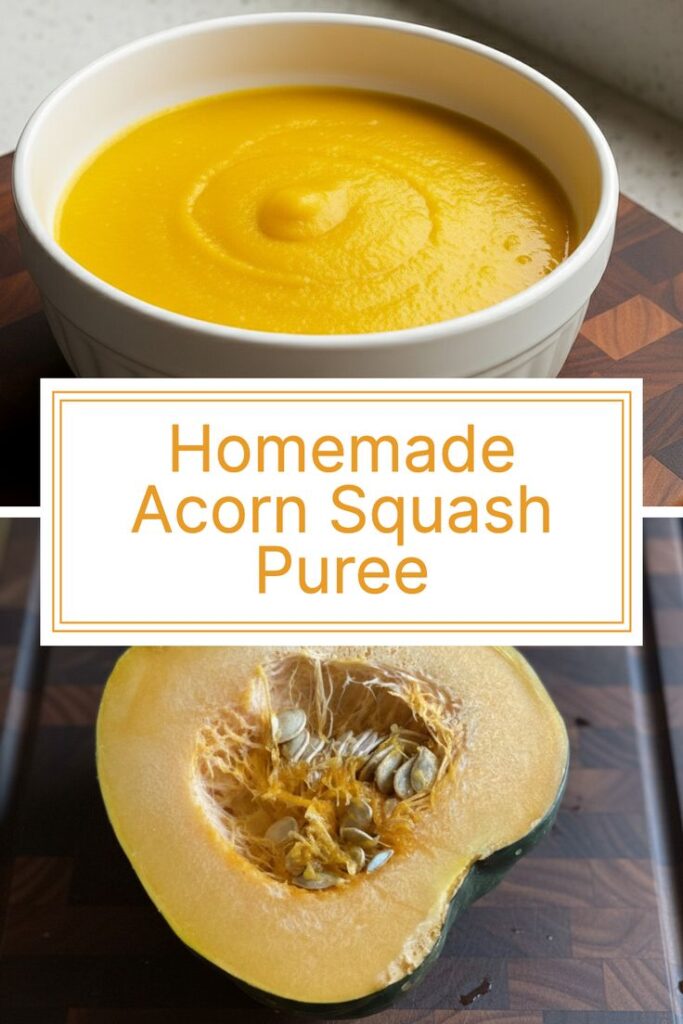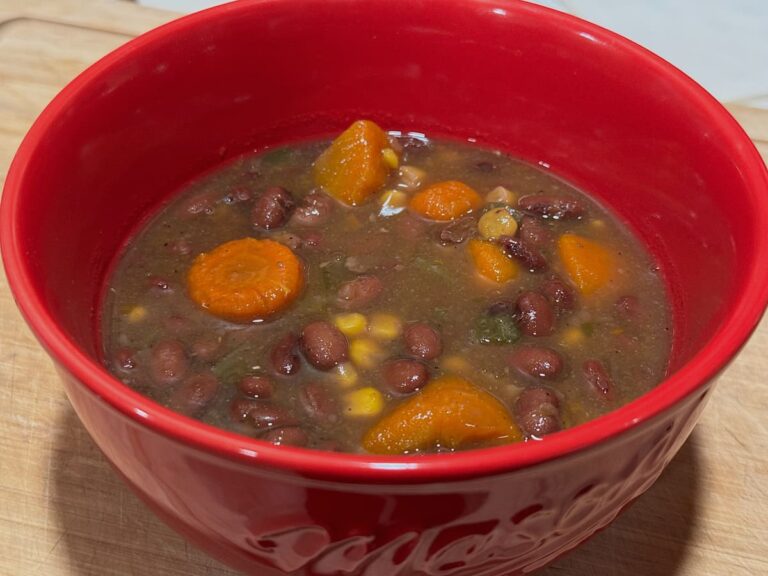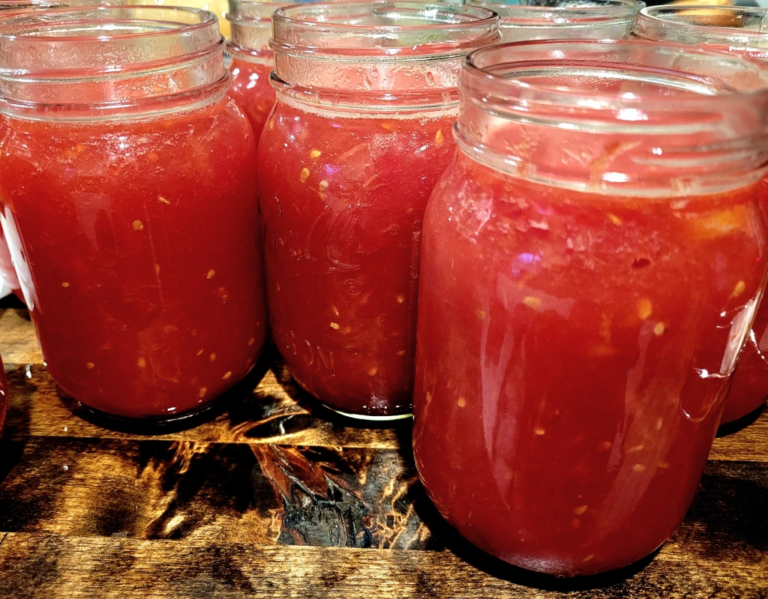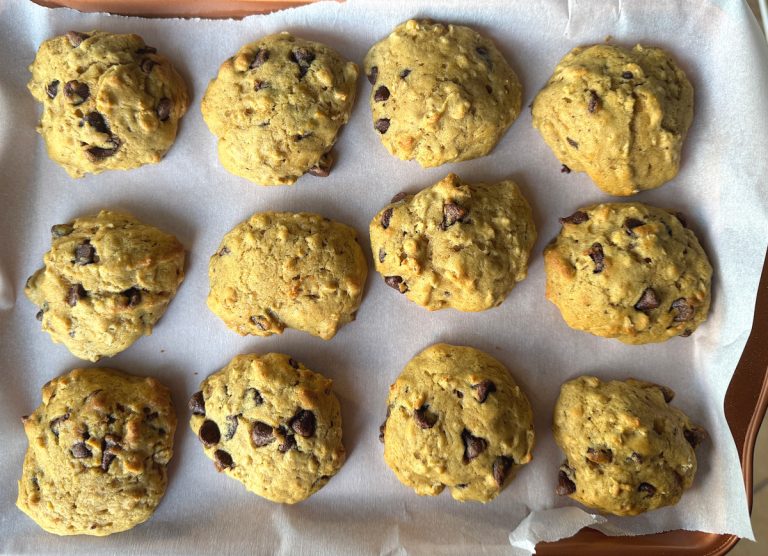How to Make Homemade Roasted Acorn Squash Puree
When it comes to fall baking, soups, or even baby food, homemade squash puree simply can’t be beaten. It’s naturally sweet, incredibly healthy, and free of the preservatives and thickeners found in most canned products. If you’re ready to upgrade your fall recipes, this step-by-step guide is for you. We’ll show you the easiest method for how to make homemade acorn squash puree—a technique so simple, you won’t even need to touch a vegetable peeler.

Why You Should Make Homemade Acorn Squash Puree
The biggest reasons to skip the store-bought cans come down to flavor, health, and your wallet. By making your own acorn squash puree during peak season, you get a superior tasting ingredient for a fraction of the cost. Let’s look at why this simple swap will change your fall baking and cooking for good.
Superior Flavor
- Deep, Roasted Flavor: Store-bought purees are often steamed or boiled, which results in a mild, watery flavor. Roasting your acorn squash caramelizes its natural sugars. This gives your homemade puree a distinct, rich, nutty, and deliciously sweet flavor that elevates all your recipes.
- The Real Flavor of Acorn Squash: You are getting 100% genuine acorn squash. This differs from many generic canned “pumpkin” products, which are often made from milder tasting varieties like Dickinson pumpkin or Butternut squash.
You Control the Ingredients
- Pure, Whole Ingredient: When you make it yourself, your puree contains only the squash itself. You eliminate the need for added preservatives, sugar, or texturizers that are sometimes found in commercially prepared products.
- Dietary Freedom: Making it at home ensures your puree is compliant with any specific dietary needs (e.g., Whole30, Paleo, or specific baby food requirements).

Incredible Value and Cost Savings
- Budget-Friendly Fall Staple: Acorn squash is very inexpensive to buy whole, especially during the peak fall season. You can make a large batch of high-quality puree for a fraction of the cost of buying an equivalent amount of canned organic puree.
- Stock Your Freezer: By roasting a few squash at once, you can easily portion and freeze enough puree to last through the winter, providing easy access to a healthy ingredient whenever you need it.
Perfect for Any Recipe
- Custom Consistency: You can adjust the thickness perfectly for your intended use. Thinner for soups, or thicker for pie filling and bread batter—you have total control with your blender or food processor.
- Versatility: Homemade acorn squash puree is a flexible ingredient that can be used everywhere, from sweet applications (muffins, pancakes, pies) to savory dishes (curries, risotto, sauces).

Ingredients & Equipment Needed
- Ingredients:
- Acorn Squash (how to pick a good one—firm, dull skin, heavy for it’s size, and developing a bit of orange on it’s skin)
- Seasoning for roasting, if desired (e.g., olive oil/butter, salt, pepper, a sprinkle of brown sugar, honey or maple syrup)
- Water (optional, for thinning)
- Equipment:
- Sharp knife (for cutting the squash)
- Spoon (for scooping seeds and scooping puree from skin)
- Baking sheet
- Parchment paper (optional, for easy cleanup)
- Food processor, blender, or immersion blender (for pureeing)
Step-by-Step Instructions On Making Homemade Acorn Squash Puree
- Preparation:
- Wash & Cut: Wash the squash & cut it in half with a sharp knife.
- DeSeed: Scoop out the seeds and stringy bits from the middle.


- Roasting (The Best Method for Flavor):
- Seasoning: Rub with a little oil, salt, pepper, brown sugar, honey, maple syrup if desired. I prefer to forgo the seasoning and roast it plain for the most versatility.
- Placement on Baking Sheet: Line the baking sheet with parchment paper for easy clean up. Place cut-side down on the baking sheet. Placing cut side down helps steam the squash while getting the deep flavor benefits of roasting.
- Roast: Roast at 350°F / 180°C) for about 35-45 minutes. The squash is done when a fork slides easily into the skin and through the flesh (called “fork-tender”).
- Cool: Allow the squash to cool enough to handle, but don’t cool all the way or it can make scooping out the flesh harder.


- Pureeing:
- Scoop: When the squash has cooled enough to handle, scoop the flesh out with a spoon. It should be very easy to scoop the flesh from the skin if fully cooked.
- Blend: Using a food processor or blender, place all the scooped flesh in and process until completely smooth.
- Consistency: If you find the puree is too thick, add a tablespoon of water and process further. If you find the flesh is too wet, strain it through a colander or coffee filter before processing it in the blender. If the puree comes out to watery, simmer it on the stove to evaporate water and thicken it up.

How to Store and Freeze Your Puree
- Refrigerate: Fresh puree will last in the fridge in an airtight container for 3-5 days.
- Freeze:
- Portion: Freezing it in 1-2 cup portions make taking it out for recipes much easier. There’s also less waste by freezing it in usable portions.
- Containers: Use freezer bags (lay them flat to save space) or air-tight containers.
- Labeling: Always label with the contents (acorn squash puree) the date it was frozen, and the amount in the freezer bag/container. You’ll thank yourself later for this.
- Thawing for Use: Put the frozen puree in the fridge overnight or leave it on the counter for a couple hours to thaw before using.



Frequently Asked Questions (FAQ)
Q: Is acorn squash puree the same as canned pumpkin puree?
A: Not quite. The homemade acorn squash puree you make is 100% pure acorn squash. Canned “pumpkin puree” in the store is typically made from a variety of squash, often a specific variety called Dickinson, which tends to be milder and less flavorful.
Q: Does acorn squash taste like pumpkin?
A: Acorn squash is a little nuttier than pumpkin. It’s also a little less sweet, but equally delicious. Acorn squash gives a richer, deeper flavor and is worth a spot in your winter kitchen.
Q: Can I peel the acorn squash first?
A: You can, but it’s much harder and riskier! The easiest method is to simply cut the squash in half and roast it. The skin becomes very easy to remove once it is cooked, which is a major advantage of making your puree this way.
Q: Can I boil or steam the squash instead of roasting it?
A: Yes, you can boil or steam it, but we strongly recommend roasting. Boiling or steaming adds water to the flesh, resulting in a more watery puree and a less concentrated flavor. Roasting caramelizes the natural sugars, giving you a richer, sweeter, and more flavorful result.
Q: How long should you roast an acorn squash?
A: 35-45 minutes will give you a soft squash that is ready for puree. If you want it a little firmer for a side dish instead, roast it about 25-30 minutes.
Q: How long does homemade acorn squash puree last?
A:
- Refrigerated: Homemade puree will last for 3 to 5 days in an airtight container in the refrigerator.
- Frozen: When properly frozen (in an airtight freezer bag or container), the puree will last for 6 to 12 months without significant loss of quality and nutrients.
Q: How much puree does one acorn squash yield?
A: The yield can vary based on the size of the squash, but a typical medium acorn squash usually yields about 1 to 1.5 cups of puree.
Q: Why is my puree watery?
A: A watery puree usually happens if you used the boiling/steaming method, or if you added too much liquid while blending. If your puree is too thin, you can correct it by gently simmering it in a pot on the stovetop for 5-10 minutes. This will evaporate the excess moisture and thicken the puree.
Q: Can I use this puree in recipes that call for canned pumpkin?
A: Absolutely! Acorn squash puree can be substituted 1:1 for canned pumpkin in almost any recipe, including pies, bread, muffins, and soups. In fact, many people prefer the deeper, nuttier flavor of homemade squash puree.
Q: Can I use this method for other types of winter squash?
A: Yes! This method works great for most other types of winter squash (ex. pumpkin, butternut, honeynut, kabocha, ect.)







